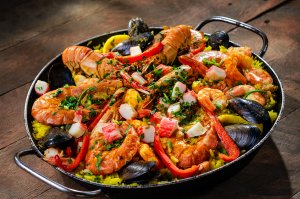What are the best Paella Rice substitutes?
Need a substitute for paella rice? If you don’t have paella rice available, there are several alternatives you can use that will give you a similar texture and flavor in your dish. Try using Arborio rice, Bomba rice, Short grain rice, Calrose rice, Calasparra rice, Brown rice, Jasmine rice, Basmati rice, or Orzo pasta.
What is Paella Rice?
Well actually it isn’t a rice! The word ‘Paella’ relates to a traditional Spanish dish that originated in the Valencia region of Spain. However many supermarkets now sell rice branded as ‘Paella rice’ – so you can see where the confusion comes from. It is a flavorful one-pan rice dish that typically includes a combination of saffron-infused rice, vegetables, meats, and/or seafood. The dish is named after the wide, shallow pan called a “paellera” or “paella pan” in which it is traditionally cooked.
The key ingredients of a classic paella can vary depending on the region and personal preferences, but some common elements include:
- Rice: Bomba or Calasparra rice is traditionally used, as they have the ability to absorb a lot of liquid without becoming mushy.
- Saffron: This spice gives the rice its distinctive yellow color and a unique floral flavor.
- Sofrito: A mixture of garlic, onions, tomatoes, and sometimes bell peppers, sautéed together to form the flavor base of the paella.
- Protein: Seafood, chicken, rabbit, and snails are common protein choices in paella. Some versions also include chorizo or other types of sausage.
- Broth: A flavorful broth, often made from a combination of fish, chicken, or vegetables, is used to cook the rice and infuse it with taste.
- Seasonings: Apart from saffron, other spices like paprika, thyme, and rosemary can be added for additional flavor.
The preparation of paella involves layering the ingredients in the paella pan and cooking them together until the rice is tender and has absorbed the flavors of the other ingredients. The bottom of the rice should form a slightly crispy layer called “socarrat,” which is highly prized in traditional paella. The crunchy texture of the socarrat is the most enjoyed part of traditional paella.
Paella is a communal dish, often served in large pans and enjoyed with family and friends. It’s not only a delicious meal but also a symbol of Spanish culture and culinary tradition. There are many regional variations of paella, each with its own unique twist on the classic recipe.
Okay, before we look at your paella rice substitute options, let’s deal with that empty cupboard situation!
Where can I buy Paella Rice?
If you want to be more prepared and ensure you don’t run out of paella rice then you should stock up now.
Nowadays most delicatessens and general supermarkets stock a wide variety of paella rice.
Or if you prefer you can also purchase paella rice on-line. So why not jump on and place your order today.
STOCK UP NOW!
Authentic Spanish Paella Rice. Clean rice, well packagaed and delivered fast.
Makes delicious paella as the rice absorbs all the flavor. Enjoy
What can I substitute for Paella Rice?
Here are some of the best ingredients to substitute the flavor and role that paella rice provides in your recipes.
- Arborio rice
- Bomba rice
- Short grain rice
- Calrose rice
- Calasparra rice
- Brown rice
- Jasmine rice
- Basmati rice
- Orzo pasta
Paella Rice substitutes
Arborio rice
Using Arborio rice as a substitute for paella rice can work well and produce a delicious dish with a creamy texture similar to risotto. While it won’t be exactly the same as using traditional paella rice, Arborio rice is a suitable alternative and can create a satisfying paella-inspired meal. Here’s how to use Arborio rice:
- Rinse the Rice: Before cooking, you can rinse the Arborio rice under cold water until the water runs clear. This step is optional, but it can help remove some excess starch.
- Adjust Cooking Time: Arborio rice takes longer to cook than traditional paella rice, but it’s still quicker than some other substitutes like brown rice. Depending on the brand and variety, Arborio rice typically cooks in around 18-20 minutes.
- Broth or Stock: Use a flavorful broth or stock (chicken, vegetable, or seafood) to cook the Arborio rice. The ratio of liquid to rice should be around 3:1, which means three cups of liquid per one cup of rice. Arborio rice needs more liquid to achieve its creamy consistency.
- Saffron: If you have saffron available, you can still use it to infuse the broth and give the dish a touch of the characteristic paella flavor and color.
- Protein and Vegetables: Add your choice of protein (chicken, shrimp, chorizo, etc.) and vegetables (bell peppers, peas, tomatoes, etc.) to the Arborio rice as you would in a regular paella recipe. Make sure the protein is cooked through, and the vegetables are tender.
- Seasonings: Use traditional paella seasonings like paprika, garlic, and thyme to enhance the flavors.
- Socarrat (Optional): Arborio rice won’t develop a socarrat like traditional paella rice, as it’s not the right type of rice for that. Instead, you’ll get a creamy and luscious consistency.
Arborio rice’s creaminess and ability to absorb flavors make it a great alternative for a paella-inspired dish. While it may not have the same texture as traditional paella rice, you will still have a satisfying and flavorful meal that you can enjoy with family and friends.
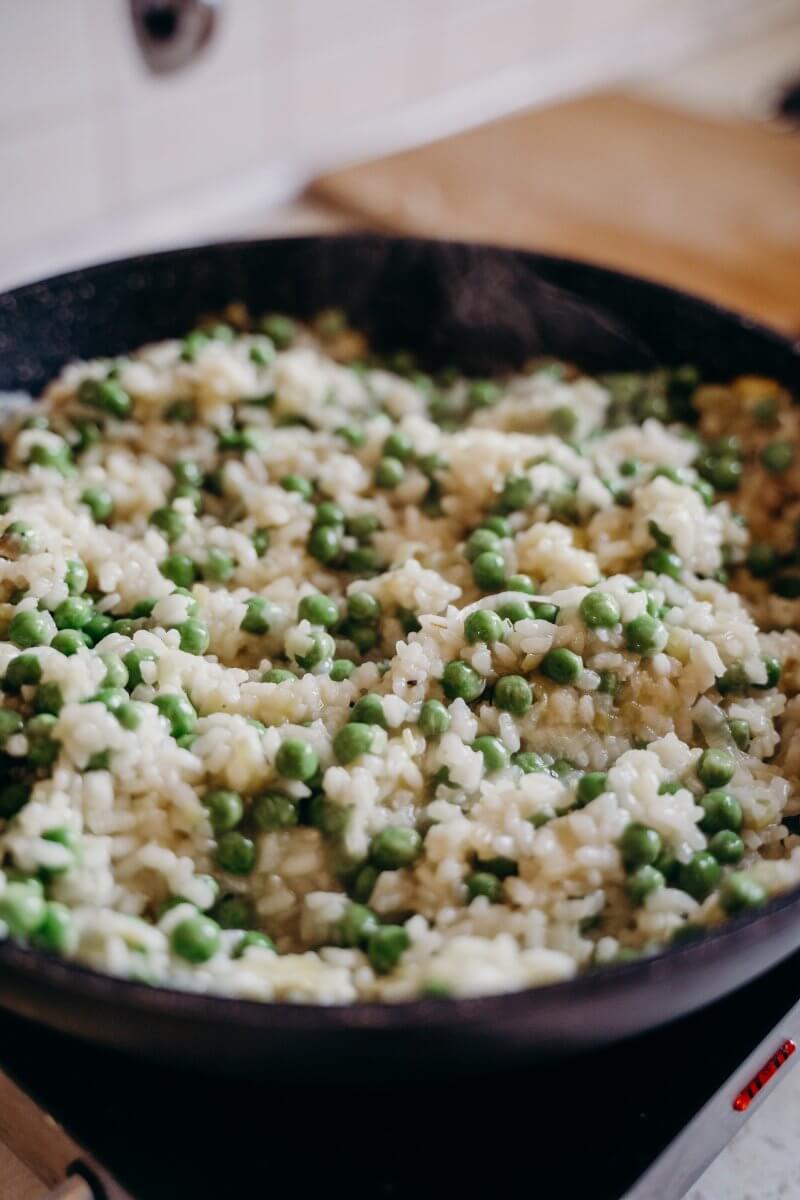
Bomba rice
Using Bomba rice as a substitute for paella rice is an excellent choice. Bomba rice is actually one of the traditional rice varieties used in making paella. It has a unique ability to absorb a large amount of liquid while retaining its shape and texture. This makes it a great choice when you want to create a flavorful and authentic paella. Here’s how you can use Bomba rice in your paella:
- Rinse the Rice: Before cooking, rinse the Bomba rice under cold water until the water runs clear. This step is optional, but it can help remove any excess starch.
- Adjust Cooking Time: Bomba rice typically takes a bit longer to cook than some other rice varieties, but it is faster than brown rice or some specialty rices. Depending on the brand and variety, Bomba rice generally cooks in about 18-20 minutes.
- Broth or Stock: Use a flavorful broth or stock (chicken, vegetable, or seafood) to cook the Bomba rice. The ratio of liquid to rice should be around 3:1, which means three cups of liquid per one cup of rice. Bomba rice needs more liquid to achieve its characteristic texture.
- Saffron: If you have saffron available, you can still use it to infuse the broth and give the dish a touch of the characteristic paella flavor and color.
- Protein and Vegetables: Add your choice of protein (chicken, shrimp, chorizo, etc.) and vegetables (bell peppers, peas, tomatoes, etc.) to the Bomba rice as you would in a regular paella recipe. Make sure the protein is cooked through, and the vegetables are tender.
- Seasonings: Use traditional paella seasonings like paprika, garlic, and thyme to enhance the flavors.
- Socarrat (Optional): Bomba rice is known for creating a socarrat, that crispy layer at the bottom of the paella. To achieve this, you can turn up the heat during the final minutes of cooking, allowing the rice to form a crust. Just be careful not to burn it.
Bomba rice is highly regarded for its culinary properties and will give you an authentic paella experience. Its ability to absorb flavors and its unique texture make it a favorite choice for many paella enthusiasts. Enjoy your delicious paella made with Bomba rice!
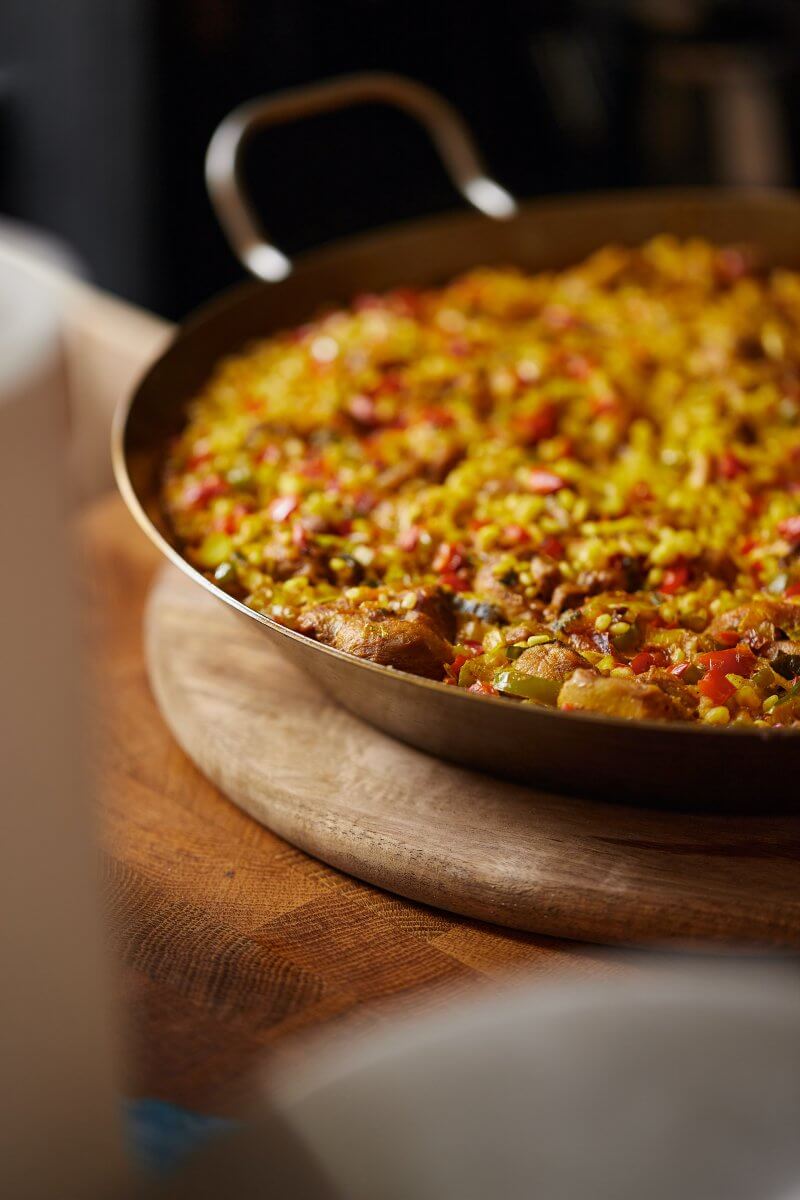
Short grain rice
Using short grain rice as a substitute for paella rice can be a good option. Short grain rice has a similar texture to traditional paella rice, though it might not be as absorbent. Here’s how you can use short grain rice in your paella:
- Rinse the Rice: Before cooking, rinse the short grain rice under cold water until the water runs clear. This step is optional, but it can help remove excess starch and prevent the rice from becoming too sticky.
- Adjust Cooking Time: Short grain rice cooks faster than some other rice varieties, including Bomba rice. Depending on the brand and variety, short grain rice typically cooks in about 15-20 minutes.
- Broth or Stock: Use a flavorful broth or stock (chicken, vegetable, or seafood) to cook the short grain rice. The ratio of liquid to rice should be around 2.5:1 to 3:1. This means two and a half to three cups of liquid per one cup of rice. Short grain rice requires more liquid than traditional paella rice.
- Saffron: If you have saffron available, you can still use it to infuse the broth and give the dish a touch of the characteristic paella flavor and color.
- Protein and Vegetables: Add your choice of protein (chicken, shrimp, chorizo, etc.) and vegetables (bell peppers, peas, tomatoes, etc.) to the short grain rice as you would in a regular paella recipe. Cook the protein thoroughly and ensure the vegetables are tender.
- Seasonings: Use traditional paella seasonings like paprika, garlic, and thyme to enhance the flavors.
- Socarrat (Optional): Short grain rice can develop a socarrat, the crispy layer at the bottom of the paella, but it might require some extra attention and a little patience. Toward the end of cooking, you can turn up the heat to encourage the formation of the crust. Be careful not to burn it, and it might not be as pronounced as with Bomba rice.
Using short grain rice will give you a paella with a similar texture and flavor to traditional paella rice, and it’s a suitable alternative if you can’t find other specific paella rice varieties. Enjoy your delicious paella made with short grain rice!
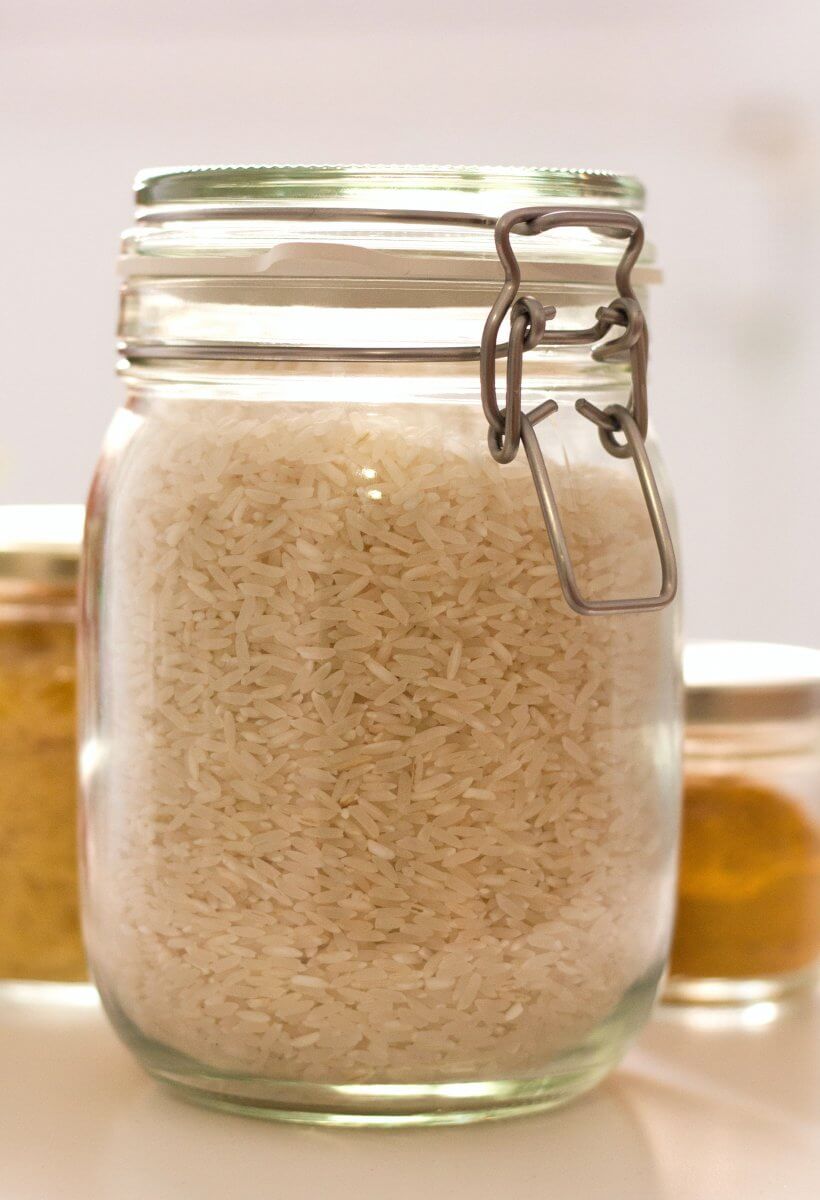
Calrose rice
Using Calrose rice as a substitute for paella rice is possible, but it’s important to note that there are some differences in texture and flavor between the two. Calrose rice is a medium-grain rice commonly used in dishes like sushi and other Asian cuisines. It has a slightly stickier texture when cooked compared to traditional paella rice, but it can still work as a substitute. Here’s how you can use Calrose rice in your paella-inspired dish:
- Rinse the Rice: Before cooking, rinse the Calrose rice under cold water until the water runs clear. This will help remove excess starch and prevent the rice from becoming too sticky.
- Adjust Cooking Time: Calrose rice cooks faster than some other rice varieties like Bomba rice but slightly slower than short grain rice. Depending on the brand and variety, Calrose rice generally cooks in about 15-20 minutes.
- Broth or Stock: Use a flavorful broth or stock (chicken, vegetable, or seafood) to cook the Calrose rice. The ratio of liquid to rice should be around 2.5:1 to 3:1, which means two and a half to three cups of liquid per one cup of rice. Calrose rice requires more liquid than traditional paella rice.
- Saffron: If you have saffron available, you can still use it to infuse the broth and give the dish a touch of the characteristic paella flavor and color.
- Protein and Vegetables: Add your choice of protein (chicken, shrimp, chorizo, etc.) and vegetables (bell peppers, peas, tomatoes, etc.) to the Calrose rice as you would in a regular paella recipe. Make sure the protein is cooked through and the vegetables are tender.
- Seasonings: Use traditional paella seasonings like paprika, garlic, and thyme to enhance the flavors.
- Socarrat (Optional): Calrose rice can develop a socarrat, the crispy layer at the bottom of the paella, but it might not be as pronounced as with traditional paella rice like Bomba. Toward the end of cooking, you can turn up the heat to encourage the formation of the crust. Be careful not to burn it.
While Calrose rice won’t give you the exact same result as using traditional paella rice, it can still produce a tasty and satisfying dish. The flavor might be slightly different due to the rice’s stickier texture, but you can enjoy a paella-inspired meal with the ingredients and seasonings you love.
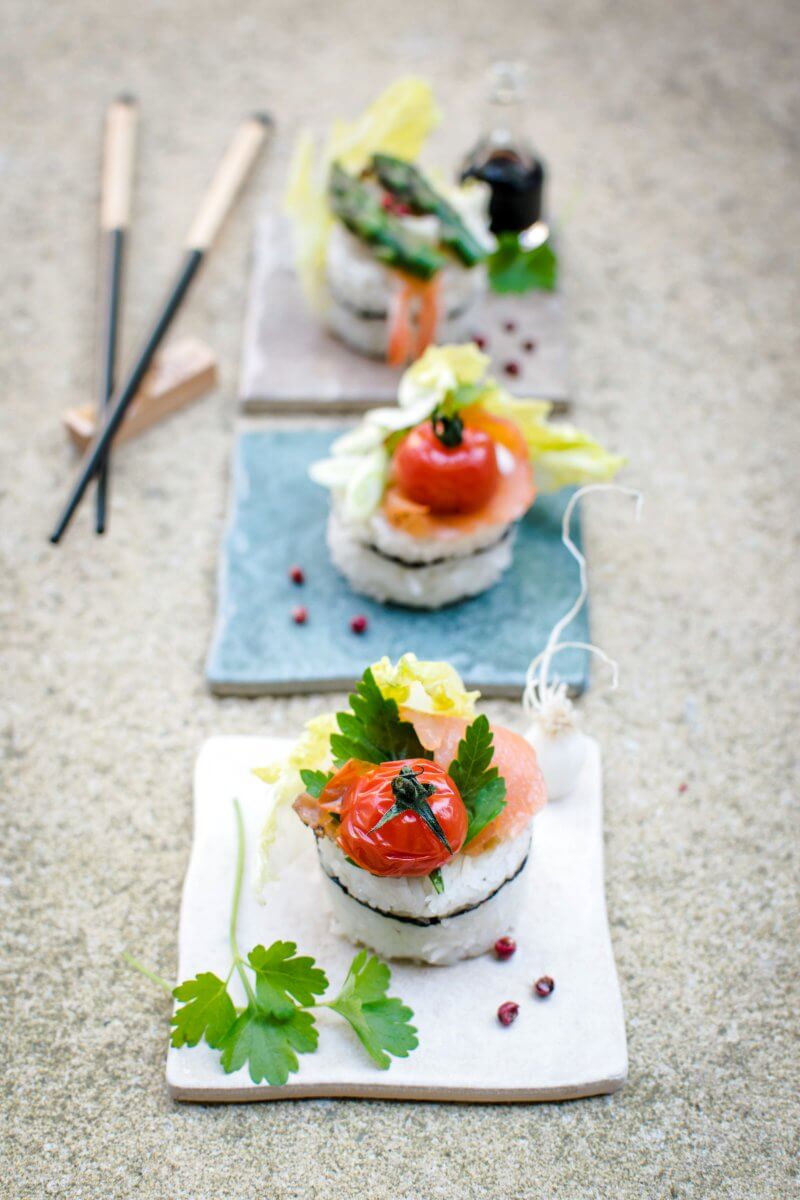
Calasparra rice
Using Calasparra rice as a substitute for paella rice is an excellent choice since Calasparra rice is another traditional rice variety used specifically for making paella. It has a similar texture and ability to absorb liquids, making it a great option for a more authentic paella experience. Here’s how you can use Calasparra rice in your paella:
- Rinse the Rice: Before cooking, rinse the Calasparra rice under cold water until the water runs clear. This step is optional, but it can help remove excess starch and prevent the rice from becoming too sticky.
- Adjust Cooking Time: Calasparra rice cooks slower than some other rice varieties like Bomba rice and short grain rice. Depending on the brand and variety, Calasparra rice generally cooks in about 25-30 minutes.
- Broth or Stock: Use a flavorful broth or stock (chicken, vegetable, or seafood) to cook the Calasparra rice. The ratio of liquid to rice should be around 3:1. So that means three cups of liquid per one cup of rice. Calasparra rice needs more liquid to achieve its characteristic texture.
- Saffron: If you have saffron available, you can still use it to infuse the broth and give the dish a touch of the characteristic paella flavor and color.
- Protein and Vegetables: Add your choice of protein (chicken, shrimp, chorizo, etc.) and vegetables (bell peppers, peas, tomatoes, etc.) to the Calasparra rice as you would in a regular paella recipe. Cook the protein thoroughly and ensure the vegetables are tender.
- Seasonings: Use traditional paella seasonings like paprika, garlic, and thyme to enhance the flavors.
- Socarrat (Optional): Calasparra rice is known for creating a socarrat, the crispy layer at the bottom of the paella. Toward the end of cooking, you can turn up the heat to encourage the formation of the crust. Be careful not to burn it.
Using Calasparra rice will give you an authentic paella experience, as it is one of the traditional rice varieties used in making this iconic Spanish dish. Enjoy your flavorful and delicious paella made with Calasparra rice!
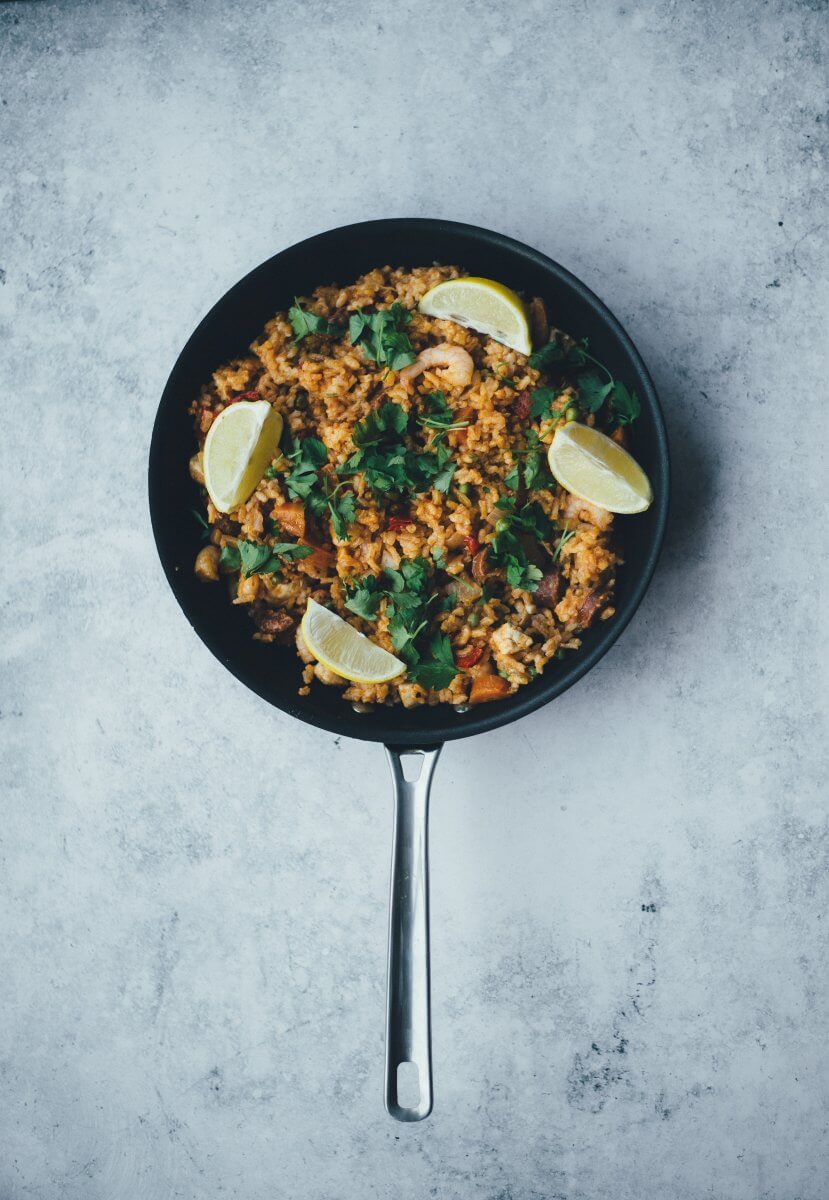
Brown rice
Using brown rice as a substitute for paella rice is possible, but it requires some adjustments to the cooking process. This is due to the longer cooking time required and the different texture of brown rice. Brown rice takes longer to cook and requires more liquid than traditional paella rice. However, it can still be used to make a delicious and nutritious version of the dish. Here’s how:
- Pre-soak the Brown Rice (Optional): To reduce the cooking time and ensure even cooking, you can pre-soak the brown rice for a few hours or overnight before using it in the paella.
- Adjust Cooking Time: Brown rice typically takes longer to cook than white rice or traditional paella rice. Depending on the variety and brand, it can take around 30-45 minutes or more. Start by cooking the brown rice in the broth or stock for about 20 minutes before adding other ingredients.
- Use More Liquid: Brown rice requires more liquid to cook properly. Increase the amount of broth or stock used, aiming for a ratio of approximately 2.5 to 3 cups of liquid per cup of brown rice.
- Saffron: If you have saffron available, you can still use it to infuse the broth and give the dish a touch of the characteristic paella flavor and color.
- Protein and Vegetables: Add your choice of protein (chicken, shrimp, chorizo, etc.) and vegetables (bell peppers, peas, tomatoes, etc.) to the brown rice as you would in a regular paella recipe. You may need to adjust the timing of when you add the ingredients to ensure everything is cooked properly.
- Seasonings: Use traditional paella seasonings like paprika, garlic, and thyme to enhance the flavors.
- Socarrat (Optional): Brown rice won’t develop a socarrat like traditional paella rice. If you want to create a slightly crispy top layer, you can finish the dish under the broiler for a few minutes.
- Patience and Checking for Doneness: Cooking brown rice in paella may require more patience and attention to ensure it is fully cooked. Keep tasting the rice as it cooks and add more liquid if necessary until the rice is tender.
Keep in mind that using brown rice will result in a heartier and nuttier flavor compared to traditional paella rice. However, it will also add more nutrients and fiber to the dish. With a little extra care and adjustments, you can enjoy a delicious and wholesome version of paella with brown rice.
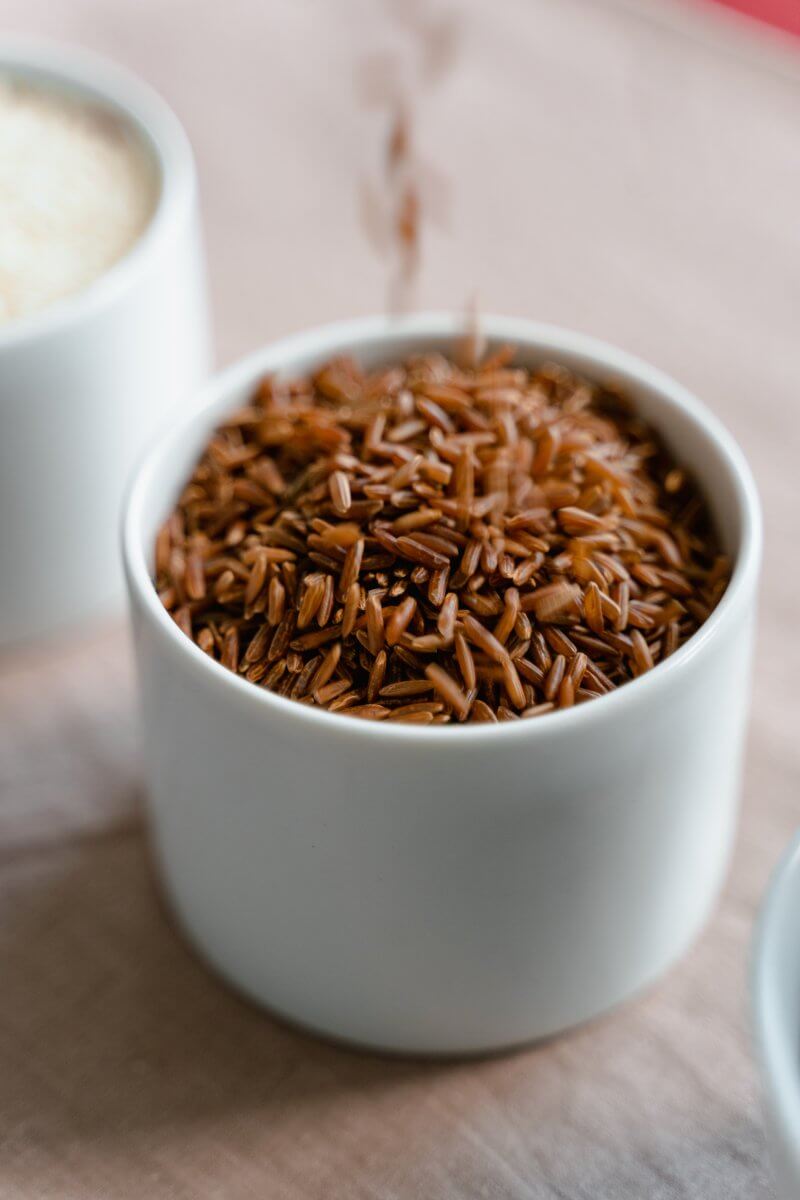
Jasmine rice
Using jasmine rice as a substitute for paella rice is possible, but it will also result in some differences in texture and flavor. Jasmine rice has a delicate fragrance and a softer texture compared to the sturdier and more absorbent paella rice. However, if you’re in a pinch and don’t have other options available, you can still create a delicious dish. Here’s how:
- Rinse the Rice: Before cooking, rinse the jasmine rice under cold water until the water runs clear. This will remove excess starch and prevent the rice from becoming too sticky.
- Adjust Cooking Time: Jasmine rice cooks faster than paella rice, so you’ll need to reduce the cooking time. Depending on the variety and brand, jasmine rice generally cooks in about 10-12 minutes.
- Broth or Stock: Use a flavorful broth or stock (chicken, vegetable, or seafood) to cook the jasmine rice. The ratio of liquid to rice should be around 2:1, similar to paella rice.
- Saffron: If you have saffron available, you can still use it to infuse the broth and give the dish a touch of the characteristic paella flavor and color.
- Protein and Vegetables: Add your choice of protein (chicken, shrimp, chorizo, etc.) and vegetables (bell peppers, peas, tomatoes, etc.) to the jasmine rice as you would in a regular paella recipe. Cook the protein thoroughly and ensure the vegetables are cooked until tender.
- Seasonings: Use traditional paella seasonings like paprika, garlic, and thyme to enhance the flavors. You can also add a pinch of turmeric to enhance the yellow color, especially if you’re not using saffron.
- Socarrat (Optional): As with using Basmati rice or orzo pasta, jasmine rice won’t develop a socarrat like traditional paella rice. If you want to create a slightly crispy top layer, you can finish the dish under the broiler for a few minutes.
Keep in mind that the final result will be different from using traditional paella rice. However, using jasmine rice will still give you a tasty dish with its own unique characteristics. Embrace the subtle fragrance and enjoy the flavors of the jasmine rice “paella” you create!
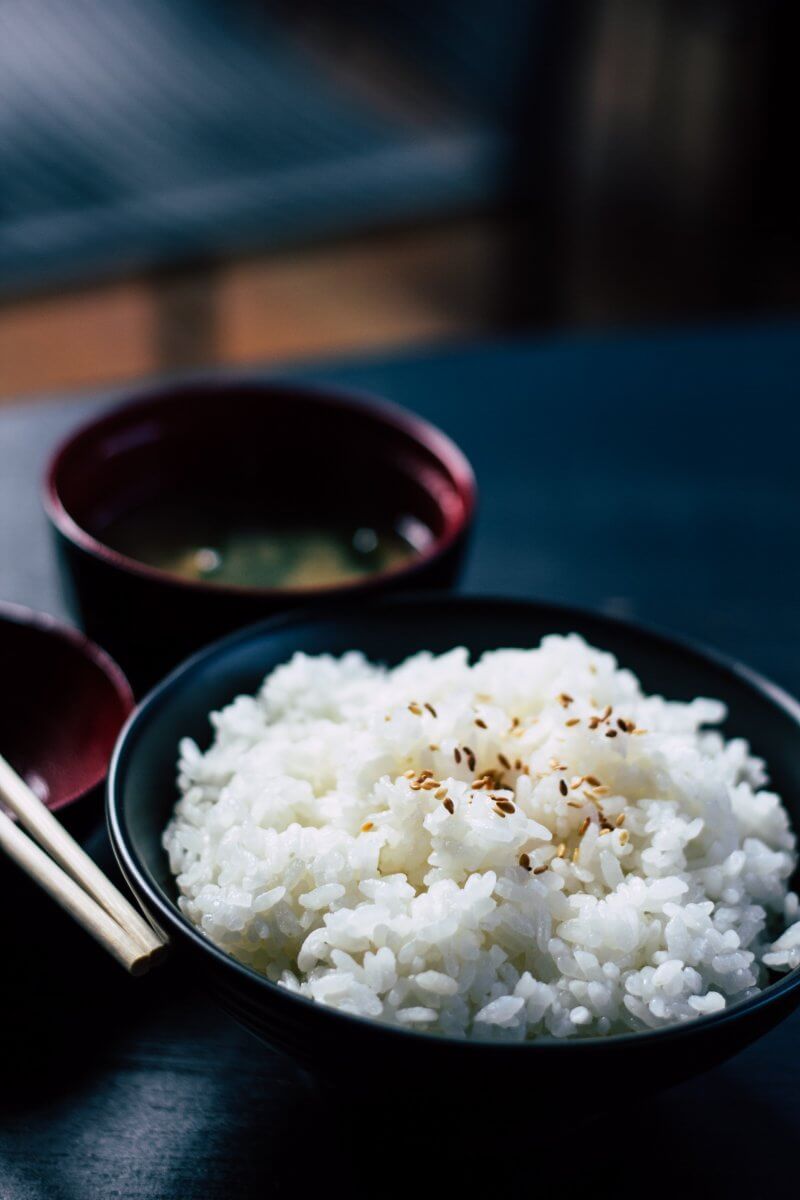
Basmati rice
Using Basmati rice as a substitute for paella rice is another option. Basmati rice has a distinct aroma and flavor, which will impart its own character to the dish. Here’s how you can adapt the recipe to use Basmati rice:
- Rinse the Rice: Before cooking, rinse the Basmati rice under cold water until the water runs clear. This helps remove excess starch and prevents the rice from becoming too sticky.
- Adjust Cooking Time: Basmati rice cooks faster than traditional paella rice, so you’ll need to reduce the cooking time. Depending on the variety and brand, Basmati rice generally cooks in about 10-15 minutes.
- Broth or Stock: Use a flavorful broth or stock (chicken, vegetable, or seafood) to cook the Basmati rice. The ratio of liquid to rice should be around 2:1, similar to paella rice.
- Saffron: If you have saffron available, you can still use it to infuse the broth and give the dish a touch of the characteristic paella flavor and color.
- Protein and Vegetables: Add your choice of protein (chicken, shrimp, chorizo, etc.) and vegetables (bell peppers, peas, tomatoes, etc.) to the Basmati rice as you would in a regular paella recipe. Make sure the protein is cooked through and the vegetables are tender.
- Seasonings: Use traditional paella seasonings like paprika, garlic, and thyme to enhance the flavors. You can also add a pinch of turmeric to enhance the yellow color, especially if you’re not using saffron.
- Socarrat (Optional): Unfortunately Basmati rice won’t develop a socarrat like traditional paella rice. If you want to create a slightly crispy top layer, you can finish the dish under the broiler for a few minutes.
Keep in mind that the final result will not be exactly the same as using traditional paella rice. However, using Basmati rice will still give you a delicious and aromatic dish with its own unique twist. Enjoy the flavors and experiment with different ingredients to make it your own Basmati rice “paella.”
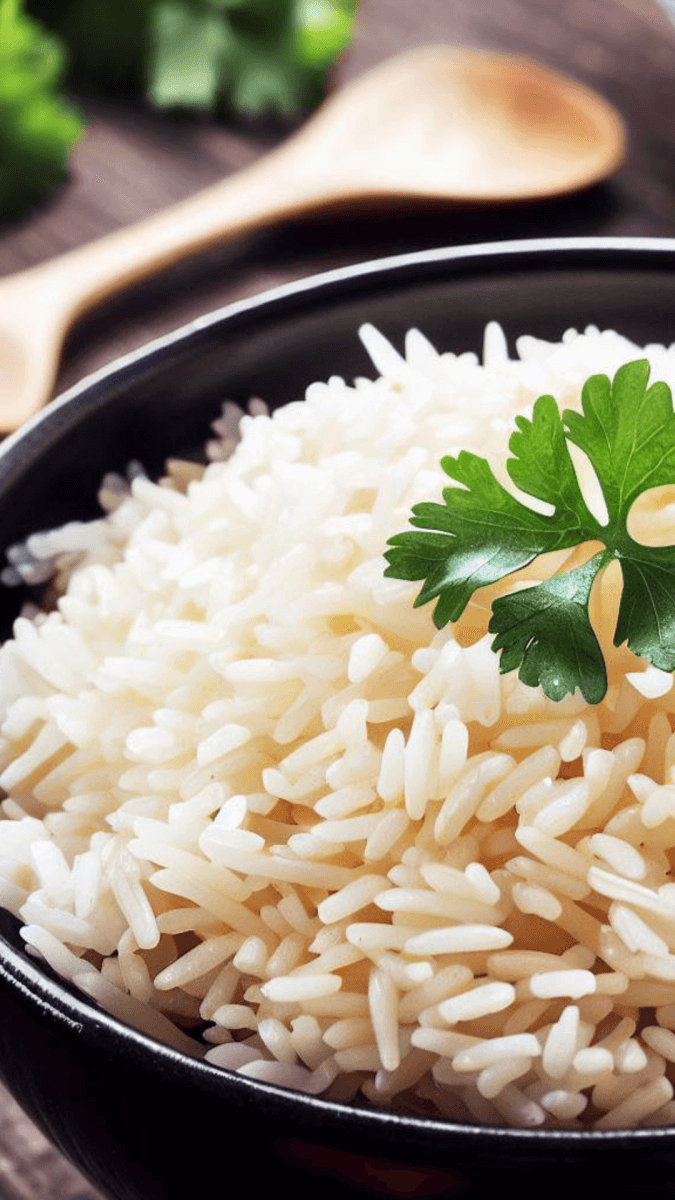
Orzo pasta
Using orzo pasta as a substitute for paella rice can work well and produce a tasty dish. However, it’s important to note that the texture and cooking process will be different. Orzo is a small, rice-shaped pasta, so it won’t absorb liquids in the same way as traditional paella rice. However, you can still create a delicious paella-inspired dish with orzo. Here’s how:
- Adjust Cooking Time: Orzo cooks much faster than rice, so you’ll need to adjust the cooking time accordingly. While paella rice typically takes around 20-25 minutes to cook, orzo will be done in about 8-10 minutes.
- Toast the Orzo: Before adding the liquid, you can toast the orzo in a little bit of olive oil in the pan. This step is optional but can add a nice nutty flavor to the dish.
- Broth or Stock: Use a flavorful broth or stock (chicken, vegetable, or seafood) to cook the orzo. The liquid should cover the orzo entirely, but you may need to add it gradually, similar to the traditional paella method.
- Saffron: If you have saffron available, you can still use it to infuse the broth and give the dish a touch of the characteristic paella flavor and color.
- Protein and Vegetables: Add your choice of protein (chicken, shrimp, chorizo, etc.) and vegetables (bell peppers, peas, tomatoes, etc.) to the orzo as you would in a regular paella recipe. Make sure the protein is cooked through and the vegetables are tender.
- Seasonings: Use traditional paella seasonings like paprika, garlic, and thyme to enhance the flavors.
- Socarrat (Optional): Since orzo won’t develop a socarrat like rice does, you can finish the dish under the broiler for a few minutes to create a slightly crispy top layer.
Remember that this is a paella-inspired dish, and while it won’t have the exact same texture as traditional paella, it can still be a delicious and quick alternative. Enjoy experimenting with different ingredients and flavors to make it your own!
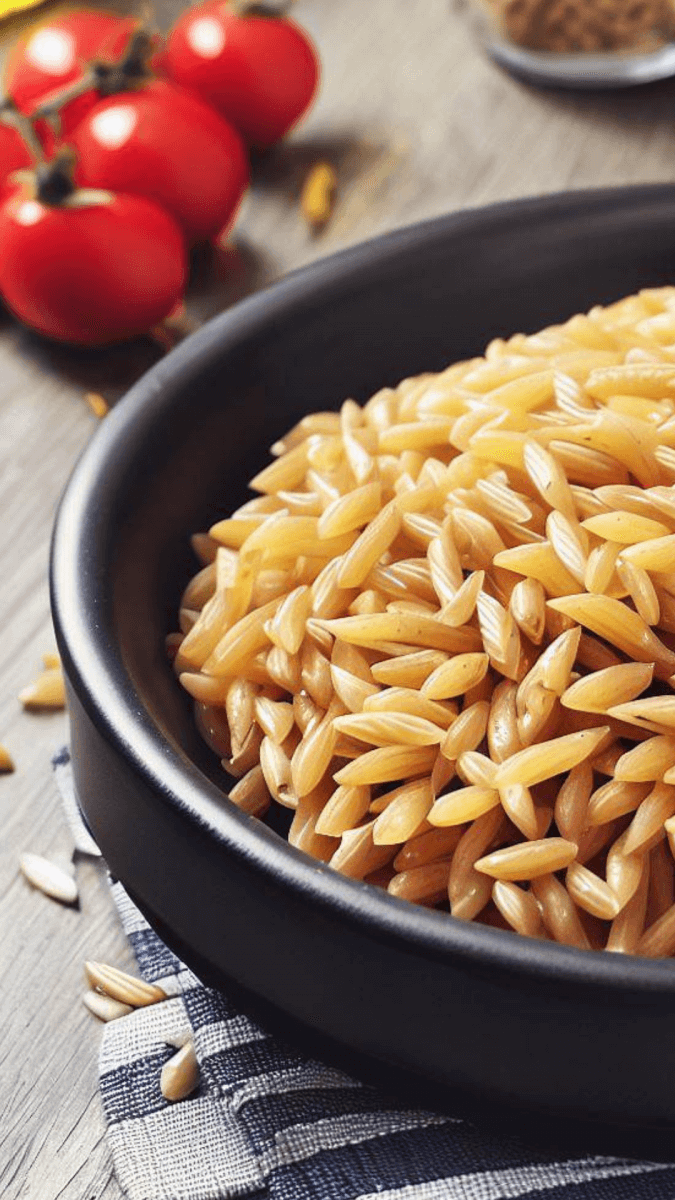
Summary for Paella Rice substitutes
Okay – that’s you all sorted with suitable substitutes for paella rice.
In conclusion, when it comes to substituting rice for paella, you have several options depending on what you have available. If you don’t have access to traditional paella rice varieties like Bomba, Calasparra, or Arborio, you can use alternatives like short grain rice or jasmine rice. Just remember that you may need to make some adjustments to the cooking process.
While orzo pasta, sticky rice, and brown rice are not ideal substitutes due to their different textures and cooking behaviors, they can still be used to create paella-inspired dishes with unique flavors and characteristics.
If you want the closest experience to authentic paella, using Bomba or Calasparra rice is recommended. These two varieties have the ability to absorb flavors and create the characteristic socarrat at the bottom of the pan.
Ultimately, whether using a substitute or the traditional rice varieties, paella remains a delicious and versatile dish. And you can adapt it to suit your taste and available ingredients. Enjoy experimenting with different ingredients and flavors to create your own unique version of this classic Spanish dish!
We have gathered together a lot more facts on ingredients such as herbs, spices, oils, nuts, etc. if you would like to learn some more.
